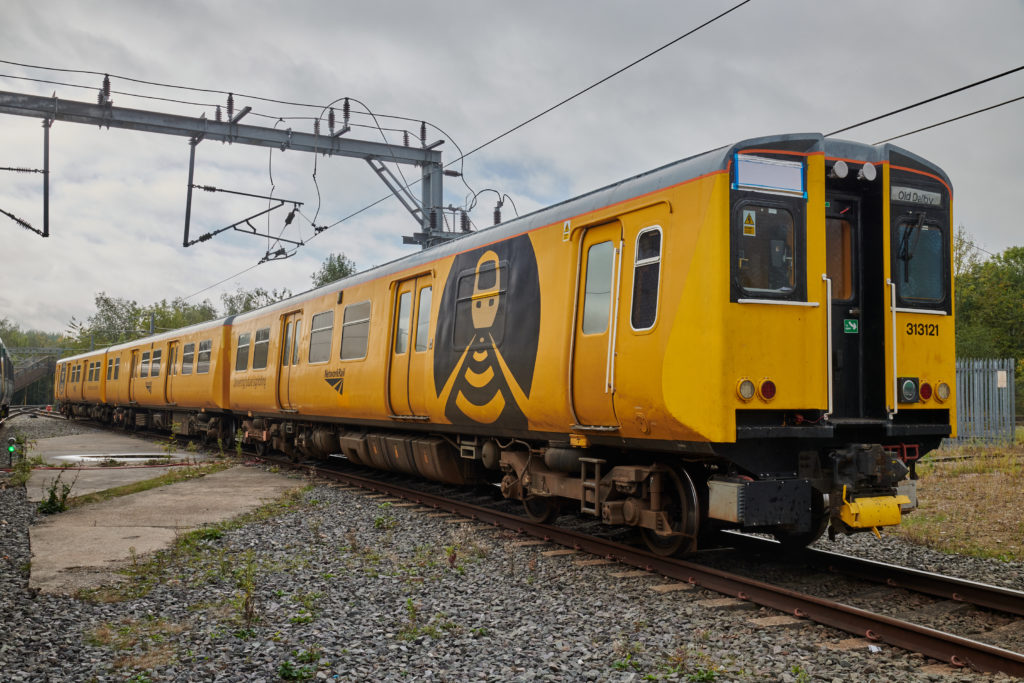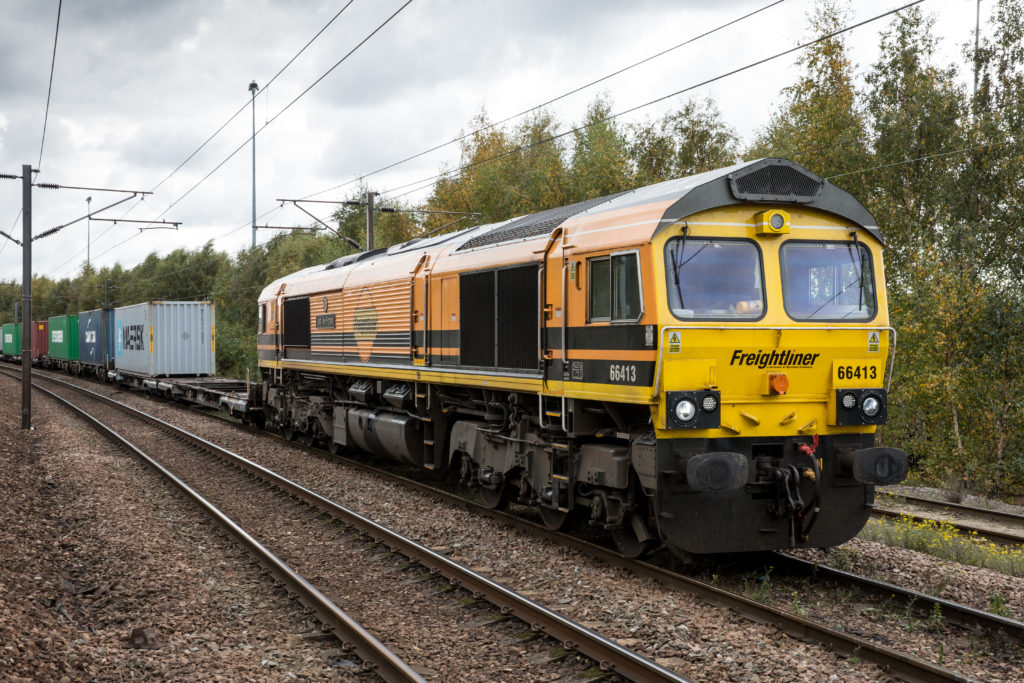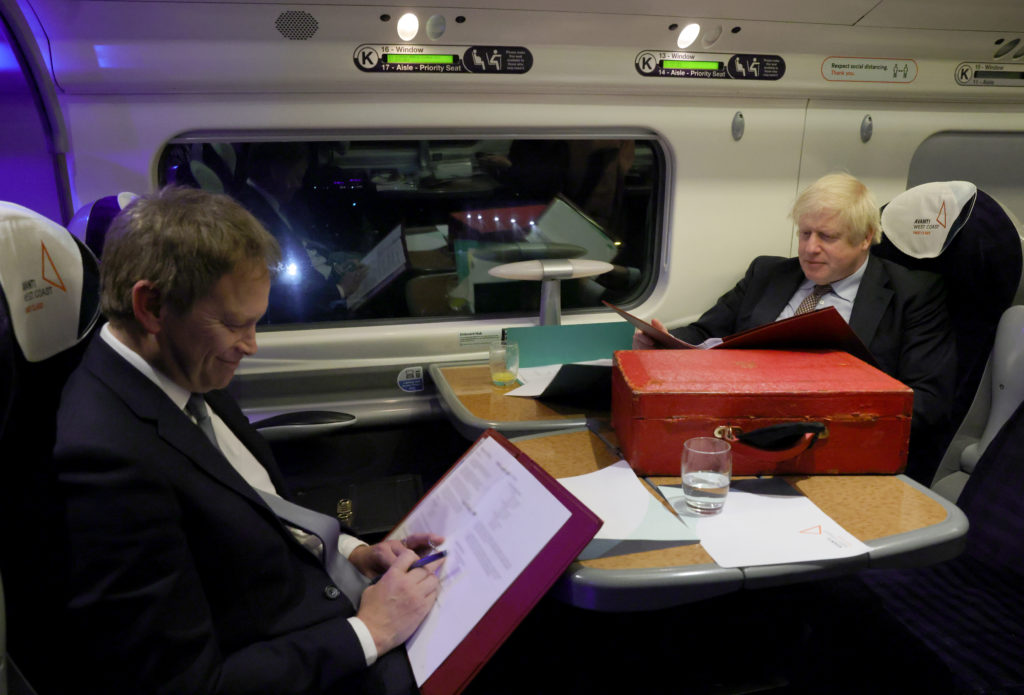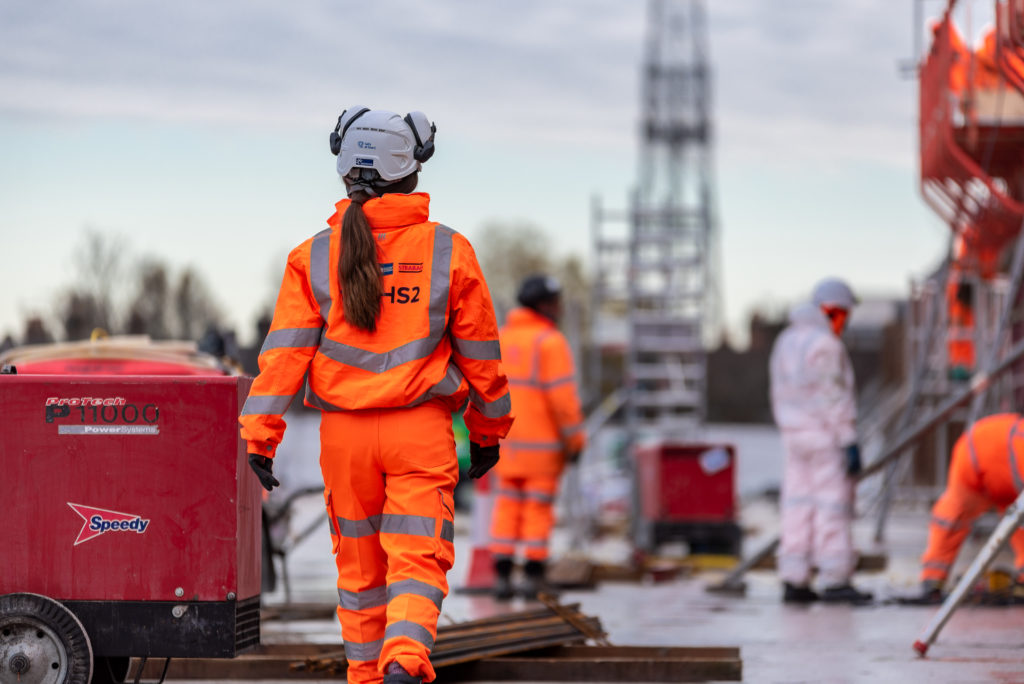Many comments have appeared since the UK government issued its white paper on an Integrated Rail Plan (IRP) in late 2021, the centrepiece of which was the curtailing of the HS2 eastern leg at East Midlands Parkway station with high-speed trains using existing rail lines from there northwards.
This announcement caused considerable controversy but there was much more in the paper than just HS2. The earlier Williams-Shapps report on how the structure of Britain’s Railways will be changed to create a single entity – Great British Railways (GBR) – was no doubt intended as a precursor to the white paper, but both have been subject to analysis and comment by the media with regional interests and disappointments being widely reported.
So, what to make of it all? The Westminster Energy Environment & Transport Forum staged an online conference in January to look at the facts, opportunities, and risks that will emerge. Badged ‘Reforming Britain’s Railways’ and sponsored by AECOM, Burges Salmon, and IMechE, an impressive line-up of speakers gave some surprising views in the process. These conferences focus more on the politics and finance than the technology but have an important influence on the subsequent engineering projects.
Split into four sessions, the first was chaired by Jack Brereton, MP for Stoke on Trent South, who indicated his hope for rail within the constituency with proposals to re-open Meir station, the Stoke to Leek line and a new station at Trentham. His comment that Stoke is well connected to London but that local rail connectivity is very poor is all too true, but typical of many smaller towns and cities around the country. He therefore welcomed the simplified structure that GBR should provide but said it was important to recognise that this was not re-nationalisation. MPs as a whole are welcoming what is being promised.
Realism from the RSSB
There are big challenges for the rail industry in the ongoing Covid pandemic, said Mark Phillips, the Chief Executive of the Rail Safety and Standards Branch. At the lowest point, passenger numbers dropped by 70% but have recovered in more recent times. Income has plummeted and full marks must be given to the Treasury for the support it has provided. However, industry costs have risen, partly due to the acquisition of new rolling stock.
A different form of competition has emerged – working from home – but car usage is also on the ascendancy. Reduced timetables have had to be put in place with fast services having more stops and, consequently, increased journey times. Improved productivity will be key to recovery together with digital technology that matches other forms of transport, e.g. autonomous road vehicles. Rail must re-adjust to new forms of demand and tackle the high cost of operations.

It is expected that the transition to GBR will take until 2024.The single guiding (but not controlling) mind should ensure that the industry will be flexible and not bureaucratic. From a passenger view, rail must be seen as one industry but inside there will be many private sector players that have to work together and TOCs must buy into the overall picture. The devolved administrations in Scotland and Wales will need to work out how they fit the GBR model as well as local, regional authorities and their funding.
Passenger comfort, on time punctuality, and value for money are what people want with no excuses when services fail. The commuter market will diminish, so efforts to increase business travel, leisure, and tourism markets must be built up. The ‘final mile’ of a journey has to be part of the offering, meaning integration with trams, buses, ferries and metro services being part of the travel package.
Freight, which has held up well during the pandemic, must have ways of maintaining newly formed paths but operating at higher speeds will be part of this. The effects of climate change and weather-related incidents need to be better predicted and managed accordingly. Line and station re-openings are an opportunity but the cost of these must be realistic. The government will need help to reach the right choices for investment.
In all of this, safety has to be maintained and technology will change with associated adaptation. The RSSB is developing a ‘Futures Laboratory’ to investigate all of this. In short, Rail is not broken but it is in need of repair.
Reaction from the supply industry
The Railway Industry Association (RIA) with 300+ members, 60% of which are SMEs, is there to represent member interests to clients, government and regulators, so says Max Sugarman the Public Relations Director. Prior to Covid, the supply chain chalked up £43 billion in revenue, providing 710,000 jobs and yielding £14 billion in tax revenue. The impact of the pandemic and latterly the Omicron variant, has seen these numbers contract but 20% of all construction work was still in rail. A recent survey indicated that 45% of industry thought rail would continue to grow, 30% thought it would contract, so on balance, confidence is considered to be returning. GBR is key to the future and the RIA welcomes the prospects.
The Association has 4 ‘Gs’ in its outlook; Growth, noting that for every £1 spent on rail generates £2.2 for the economy; Global, meaning the whole of the UK; Green where rail has obvious advantages and Geography with exports being valued at £800M/year.
The RIA wishes to see 5 main elements emerge: (i) no pause in committed work or new projects during the transition period; (ii) clear and open dialogue with suppliers and between suppliers; (iii) appropriate private sector engagement with visibility on how investment decisions are made by government. (iv) Rail being able to thrive; and (V) industry being part of a positive legacy.
The green agenda is increasingly important with electrification being a major part of this. Historically this has been subject to stop gap investment with huge detrimental consequences for both skills and cost. A different approach is needed. ETCS will be a new focus for investment with the ongoing ECML project being the test case and lessons learned being openly transferable.

The passenger viewpoint
In all of this, what are passengers looking for that is different? Sharon Hedges from Transport Focus reported on recent survey results. Improving traveller experience was the banner headline consisting of service reliability, a comprehensible fares policy that offered value for money, staff availability, toilet facilities, and journeys to be personalised, the latter to apply to both disabled and non-disabled travellers. In more recent times, social distancing has become a factor, along with good train cleaning since Covid remains a point of concern. When things go wrong, compensation should be straightforward and rapid.
There is recognition that the rail market is changing but train operators have to up their game in the leisure market. Rail is still viewed as expensive and needs to make the most of its green credentials. The balance between capacity and passenger demand needs to be better understood. An increasing concern is the impact and disruption caused by engineering work where the travelling public is put off rail travel by bus substitution and/or long diversion routes.

Regional views
Unsurprisingly, the UK regions have views as to how rail can enhance travel in their own particular area. Andrew Summers, Strategic Director for Transport East (which serves East Anglia), has a 30- year strategy for transport out for consultation. Four priorities are emerging.
Decarbonisation to net zero by 2040. Forty-two percent of emissions come from transport, with large car ownership and heavy haul lorries from ports, of which there are many with Felixstowe and London Gateway dominating. Modal shift to rail is important including hydrogen and battery being used for rural communities.
Connectivity. For rail it is very much London centric, but travel between the region’s 75 towns and cities is considerable. Half a million new homes will be built in the next 20 years, which implies better transport links. Both the Great Eastern and West Anglia lines need to be speeded up and cross-country links such as Cambridge Ipswich and Ely Norwich have to be improved.
Rural and coastal connectivity is poor with rail needing to be part of an improvement programme both on existing lines and re-opening some closed route.
International Gateway Opportunities. The region has 13 ports and three airports. Freight traffic from these is significant but constrained by infrastructure limitations. The Felixstowe branch and Haughley junction were cited as examples where investment is urgently needed.
Similarly, in the North East, Jonathan Spruce from Newcastle-based Fore Consulting and an ICE Trustee, questioned how customer demands can be realised to support regional economic growth. The IRP is generally welcomed but it lacks any vision for electrification and the connectivity needed for places such as Sheffield and Hull. There are just too many rail pinch points with parts of the East Coast Maine Line (ECML), the Castlefield corridor in Manchester, and access in to and out of Leeds station being prime examples. These should be investment priorities.
The freight perspective
With Lord Tony Berkeley taking the Chair, and being well known for his informed view of rail in general and freight in particular, Maggie Simpson, Director General of the Rail Freight Group, asked the question ‘What do freight customers want from the railway?’ High on the list is more freight routes between the main hubs and also to ports for the export-import business. While freight has been a success story during the pandemic, with increased paths becoming available, this needs to be maintained as passenger traffic returns. A big worry will be rising inflation, meaning increased costs for both road and rail transport. Rail needs resilience and reliability but has to be affordable.
Freight depots are now few and far between, but working out freight routes between all of these with fast services linking them all on a regular basis needs to be part of the ongoing plan. Investment to provide additional freight corridors e.g., Skipton – Colne, would be beneficial. There is recognition that rail is only suited to the trunk haul from, for example, port to inland centres, leaving road for the local collection and delivery. However, to encourage a switch to rail, these services have to be guaranteed.
Ever mindful of the financial situation, schemes like the Ely remodelling are held up awaiting investment funding. Freight paths have to be better organised and should take advantage of Traffic Management Systems and digital signalling, although it is recognised the latter will take a long time to come to fruition. The tradition of freight having a lower priority to passenger trains needs to be reconsidered.
Third party views
Inevitably, consultants and legal organisations will offer comment and advice on the rail reform proposals. Andrew Meaney from the economics and finance consultancy Oxera considered that the relationship between politics and rail will be dominant. Government ministers are heavily involved with rail issues which is a step change from 25 years ago. Key will be how the future network will be funded while recognising the need for improved service quality and a changing passenger behaviour post Covid. Regional connectivity is becoming more important and GBR has to be the focus for this.
However, financial concerns must not lead to ‘death by a thousand cuts’ in the closure of stations, perhaps an entire line, or the reduction of train services. New purpose must emerge with associated new relationships. Bolder measures were advocated by Chris Lewis from Burges Salmon, the London based law firm. The stated GBR claim of putting customers first, and what this means for the whole industry, must be understood. Examples include: adaptation to changing travel patterns; a modernisation of the rail experience; reform of ticketing and retail; safety and security; the growth of rail freight; and creation of innovative services using open data, data sharing, and GDPR compliance.

The thinking of the rail industry
The most influential of existing rail organisations is probably the Rail Delivery Group (RDG). Robert Girgis, its Head of Policy, stated that much will depend on the design of the Passenger Service Contracts that will transition from the existing TOCs. The RDG is optimistic about passenger numbers returning but it will need to understand the nature of changed travel patterns and different markets. A ‘one size fits all’ is not appropriate since Inter City and commuter markets need a very different understanding. Concession type models may emerge but direct linking to the obligations that they are granted will be essential. Creation of output focussed contracts are likely with a ‘Can Do’ culture being part of that.
Existing TOCs with long term contracts will have to transition into the new contractual arrangements but with recognition being given to the commitments within the existing contract. Similarly, Open Access train companies must be given every opportunity to thrive in the integrated plan.
From a smaller TOC perspective, Sophie Chapman of Heathrow Express visualised the evolving requirements of train travellers in support of regional economic growth. Regular ‘old style’ commuters know where they are going and almost do not need the information provided. Occasional travellers are often bewildered by signage and information availability. This has to be addressed especially as the younger generation expect all information to be available on a smart phone. The messaging must however be consistent for all rail travel and displayed in a uniform way.

Heathrow is a hub and needs to deliver travellers to the regions. Doing this by train is preferable to short air hops. At present, the airport is only connected well to London with connections elsewhere being poor. A connection going westward to the Great Western (GW) main line would be relatively easy to achieve but a rail link to the south of the airport should also be part of the plan. Heathrow employs thousands of people so both these links would encourage workers to travel in by train rather than car.
The role of technology
The fundamental desire to create a more integrated railway will need a lot of technology if the ambitions are to be realised. The development of new systems for both the direct operation of trains and the indirect facilities that will help passenger’s knowledge of rail travel, have to be robust in both the thinking and proving of the product. Several universities have rail research departments and the Birmingham Centre for Rail Research and Education is one of the most significant. Its head, Professor Clive Roberts, reported on the importance of Digital Twins, a technique aimed at de-risking the end project.
Already used extensively in the automotive, aerospace and construction industries, it is increasingly being deployed in rail. The principle is to produce two models, one primarily aimed for the design of the total project with the other (its twin) being there to test out the operational and engineering scenarios such that any shortcomings can be fed back into the first model in the refinement of the design. A prime example is the planning for HS2 where a digital model of the whole line has been created to test out how the anticipated train services can interact with each other and especially the interfaces with conventional lines and services. This covers not just the service patterns but the signalling, electrification, and timetable production.
It was noted that a former BR Chairman, Peter Parker, once said in the 1970s that the railway falls flat on its interfaces. That is as true today as it was then. Too many projects have gone wrong because interfaces have not been understood or, worse, just ignored. The constant feedback loop between the twins will do much to eliminate the risk.
Ticketing remains a constant source of criticism from the general public. Neil Connor, the Client Executive for Public Transport at Fujitsu, believes that smart and flexible ticketing can be developed using power and quantum computing, which will optimise journey opportunities. Standards will need to evolve between National Rail and other operations, e.g., Transport for London (TfL), trams, buses, and ferries, such that a single ticket can cover all modes. In this, difficult decisions will be needed as to who sells the ticket and who collects the revenue, part of the problem being the government policy for having more competition. Once again, the importance of digital twins in the development process was emphasised.
Robust technology is a major part of the declared intention to create a digital railway and a better understanding of what this term means to rail managers, the supply industry, and the general public should have its own publicity focus.

The Government’s stance
As can be seen, many views are emerging as to how the future railway structure and services should be designed under the GBR organisation. The lessons from the past have to be reflected in the new Network Governance and Priorities, says Dan Brown, Director for Strategy and Policy at the Office of Road and Rail (ORR).
A number of critical points are at the centre of government thinking. Firstly, the funding to ensure it can all happen, which needs to embrace safety, performance and sustainability as well as new projects.
Second, Enhancing and Growth Proposals are coming in thick and fast but the improvement to services that developed in the 1990s are now on shifting sands. Rail has seen the transition from public funding to private funding but is now back to largely public funding which, with the country amassing huge debts since Covid, will always be sensitive. The Treasury will continue to have a big say in what can or cannot be spent in the future.
Third, determining the role of government to develop rail requirements and priorities will depend on the accountability of the future rail directors and who they are responsible to, namely stake holders, regulators, or centralised government. The Williams-Shapps report has tried to answer this but recognises that there is no one size fits all.
Finally, implementation risks are real and there must be no disruption to operations and committed projects whilst the organisational transition is taking place. As one former British Rail General Manager once commented: “during any reorganisation, you bleed”.
The ORR is preparing to take an ‘All Systems’ approach, which includes freight which has to maintain the additional traffic gained since the start of the pandemic. GBR needs to give strategic direction but must remember the lessons from the previous Strategic Rail Authority’s demise.

In summary
It is clear that the creation of GBR and the implementation of the IRP has many hurdles to cross before a firm idea on how a definite delivery plan will be structured. Lots of aspirations are emerging but just how many of these will actually see the light of day remains to be seen. The availability of funding will be the influencing factor and, with the difficult financial position that the UK faces post Covid, making the case for rail investment will be a challenge alongside competing claims from other organisations. The Treasury will demand lower costs for running the railway.
The demand for London style commuting around the big cities of the north is probably not financially viable as revenue per passenger does not match that of London and the South East.
Strangely, there was almost no mention of HS2 or the ERTMS programme, with the conclusion that these are in separate money packages that will not influence the general railway finances.
Improved regional interconnectivity was a common request which should be able to be achieved relatively easily. More difficult will be the business case for reopening closed lines and provision of new stations as these remain expensive. A rolling programme of electrification might just happen to achieve decarbonisation targets. Above all, the declared aim to ‘put customers first’ will be how the new organisation is judged. Rail Engineer will monitor closely the progress that emerges.

